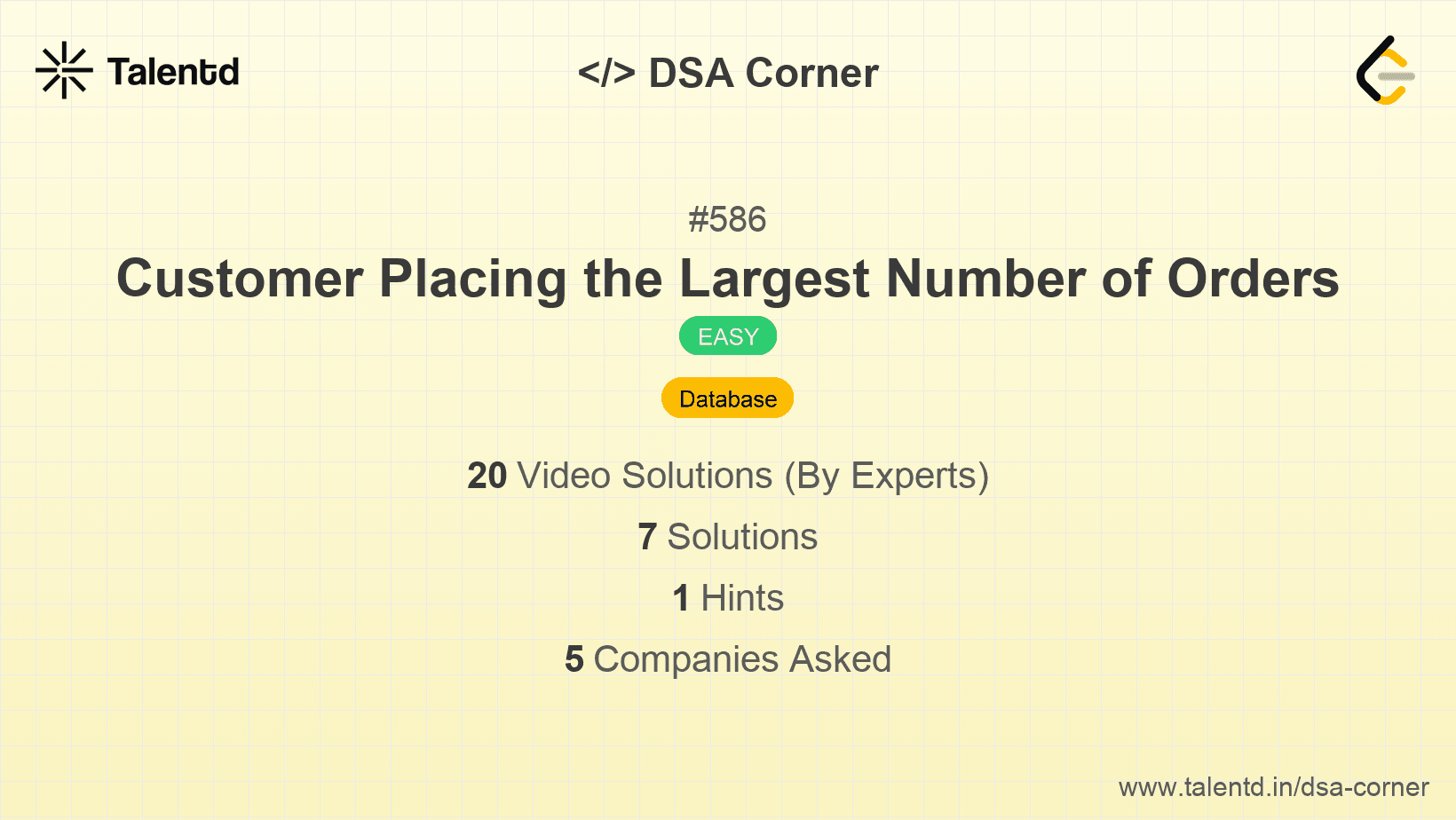
Sponsored
This approach leverages the SQL capabilities of grouping and aggregation to solve the problem efficiently.
First, we perform a GROUP BY operation on the customer_number to count the number of orders per customer. Then, we use ORDER BY in descending order and LIMIT 1 to retrieve only the customer with the maximum count of orders.
Time Complexity: O(n), where n is the number of orders.
Space Complexity: O(1), as we are not using any additional space outside of the database's space.
1import java.sql.Connection;
2import java.sql.DriverManager;
3import java.sql.ResultSet;
4import java.sql.Statement;
5
6public class LargestOrderCustomer {
7 public static void main(String[] args) {
8 try {
9 Connection connection = DriverManager.getConnection("jdbc:sqlite::memory:");
10 Statement stmt = connection.createStatement();
11 // Assume table creation and data population here.
12 String sql = "SELECT customer_number FROM Orders GROUP BY customer_number ORDER BY COUNT(order_number) DESC LIMIT 1;";
13 ResultSet rs = stmt.executeQuery(sql);
14 if (rs.next()) {
15 System.out.println("Customer Number: " + rs.getInt(1));
16 }
17 rs.close();
18 stmt.close();
19 connection.close();
20 } catch (Exception e) {
21 e.printStackTrace();
22 }
23 }
24}This Java solution establishes a connection to a SQL database and utilizes a PreparedStatement to execute the query that finds the customer with the most orders. It uses JDBC for database operations.
This approach involves manually iterating over the orders and using a data structure like a hash map (or dictionary) to count the number of orders per customer. Once counted, we can iterate over this collection to find the customer with the maximum orders.
Time Complexity: O(n), where n is the number of orders.
Space Complexity: O(m), where m is the number of unique customers.
1def find_customer_with_most_orders(orders):
2 order_count = {}
3 # Count orders per customer
This Python code manually counts customer orders using a dictionary to map customer numbers to their respective order counts. Finally, it identifies the customer with the maximum count.